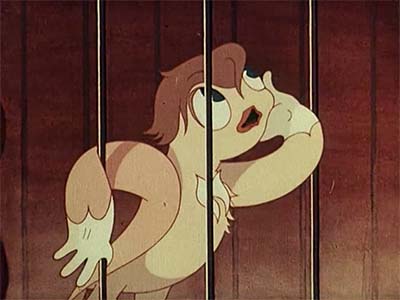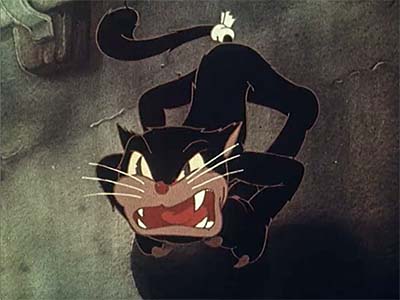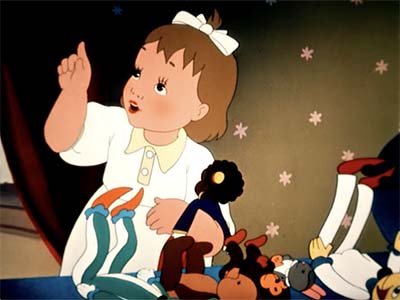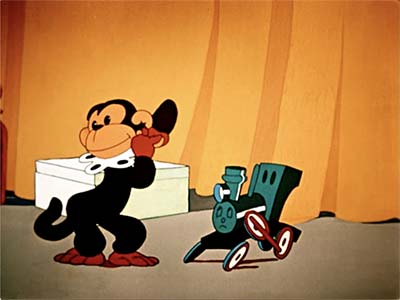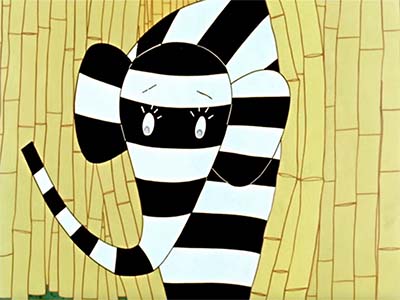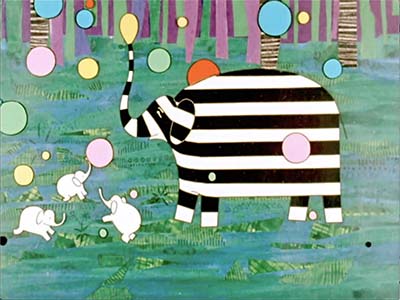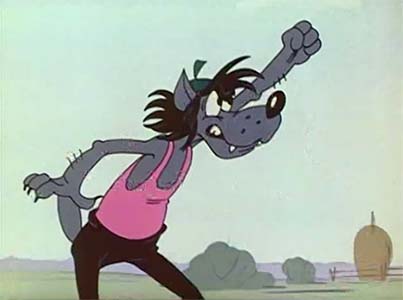People who aren’t members of Animation Resources don’t understand how comprehensive our Reference Packs are. Over the next couple of weeks, we will be posting what each section of our current RefPack looks like. If you are a member of Animation Resources, click on this post to go to the Members Only page. If you aren’t a member yet, today is the perfect time to join! Our current Reference Pack is one of our best yet, and General and Student Members get access to a special Bonus Archive with even more material from past Reference Packs.
What are you waiting for?![]()
JOIN TODAY!
https://animationresources.org/membership/levels/

The world of animation is much bigger than it might appear to us at first glance. We are all familiar with the films we grew up with, but Hollywood wasn’t the only place that produced great cartoons… Poland, Japan, Russia, China and Europe all have their own traditions and a rich history of animated film making. Animation Resources’ archive contains many foreign films that are rarely seen in the United States. We feature a sampling of interesting animation from around the world in each Reference Pack.
Poor Hans!
![]()
Frank Leberecht / Deutsche Zeichentrickfilme GmbH, Germany / 1943
Download this article
In an earlier Reference Pack, we presented the work of Hans Fischerkoesen who was often referred to as “the Walt Disney of Germany”, but he wasn’t the only animator sponsored by the Nazis during World War II. The Deutsche Zeichentrickfilme GmbH (DZF) was established by Propaganda Minister, Joseph Goebbels in 1941 to build the German animation business up to the point of rivaling American animation studios. No expense was spared. At its peak, the studio had a staff that numbered nearly 100, and artists were paid nearly double the salary of comparable jobs elsewhere. The goal of the studio was ambitious— to create 19 animated shorts by 1947, and an animated feature by 1950, and no expense was spared to achieve that goal. Ultimately though, they only ended up producing one film— "Poor Hans".
It’s difficult to overstate the importance of animation to the Nazis. Hitler was a big fan of Disney cartoons, in fact, Goebbels once gave him a Christmas gift of a dozen prints of Mickey Mouse cartoons that he had smuggled into German from the United States. Propaganda was an important part of Hitler’s plans, and he realized that propaganda in the form of fables with animal characters would make more of an impact on society than overt political propaganda. Unlike Russian propaganda which was direct to the point of aggressiveness and designed to spur to immediate action, Nazi propaganda was more subtle, with the purpose of convincing people that the folk life in Germany was better than traveling and interacting with people from other countries and races. "Poor Hans" fit into this mold, telling the story of a canary who escapes his cage and suffers great hardship in the real world, finally returning to the safety and security of his home.
This film was begun under the supervision of Dr. Werner Kruse, but when it was revealed that he was married to a Jew, he was demoted and Frank Leberecht took the helm. Leberecht hired a group of newspaper cartoonists to come up with gags and story ideas. Since they had very little cinematic experience, the cartoon ended up being a two reeler with a lot of little things happening, but very little overall continuity. Even though the film overstays its welcome at nearly 17 minutes, it’s impressive how much production value the crew was able to accomplish on their very first film. Had the Nazis not lost the War in 1944, DZF might have eventually overtaken Disney’s lead.
Goebbels was not entirely happy with the film. He wrote in his journals that the lead character was weak, but the film was a good start. Watching the cartoon, you can see exactly what they were modeling it on. The film opens with a three dimensional set, exactly like the ones used in Fleischer Color Classics, and the design and gags echo Disney’s "Who Killed Cock Robin".
As Germany conquered more territory, they raided the animation studios in those countries for talent. A famous French animator named Robert Salvagnac was offered the choice between a comfortable life animating at DZF or a considerably less comfortable one in occupied France. The artists at DZF were considered "essential staff" guaranteeing deferment from military service, and many of them worked there just for that reason. However, as the War dragged on and the Nazis became more desperate, able-bodied men at the studio were drafted into military service. In 1944, the government money that supported the studio was cut off and the staff was reassigned to armament factories. When the Russians overtook Germany, the studio was raided and the films were confiscated to the Soviet Union, where they remained until 1991.
We’re very proud to be able to share this rarely seen piece of animation history with you. We hope you will find it useful.
MP4 Video File / SD / 16:45 / 633 MB Download
JOIN TODAY To Access Members Only Content
Little Masha’s Concert
![]()
Mstislav Pashchenko / Soyuzmultfilm, Russia / 1948
While the Germans aspired to create animated propaganda films to rival the quality of theatrical cartoons in the West, Russia is the country that actually achieved that goal. "Little Masha’s Concert" demonstrates how quickly Russian animation progressed after World War II. The animation, color and design of this film are the equal of any Hollywood cartoon.
Propaganda is designed to connect with audiences in a specific place and time, and sometimes its intent isn’t clear to viewers with a different frame of reference. This film is like that. The story is about a young girl named Masha who has a favorite doll in the form of a little black boy. She sees that her doll is sad and asks her mother why. Her mother tells her that black people have led very difficult lives, and Masha enlists all her other toys to put on a concert to cheer him up. The performance is a success and all of the toys embrace the black boy doll as their friend.
To modern viewers, the black boy doll has a meaning that is quite different than it would to movie-goers in the Soviet Union in 1948. Children there had very little interaction with black people, but their educational system taught them that in America, black people were enslaved and abused. They would connect the dots in this story to understand that the message of the film was anti-American in nature. One of the final scenes shows the black doll happily surrounded by Asian, Arab, Indian and Russian dolls. The message is that Russia is the friend of ethnic groups that suffer under the domination of Western imperialistic oppression.
Mstislav Pashchenko was one of the pioneers of Russian animation. We’ve seen his film "An Unusual Match" in a previous Reference Pack. He directed that film alongside Boris Dyozhkin who was responsible for Western style timing and posing in his sports cartoons. In particular, you will want to still frame through a scene where a teddy bear does a Russian dance. It is simple and solidly drawn, putting across the dance rhythms perfectly.
MP4 Video File / SD / 9:33 / 127 MB Download
JOIN TODAY To Access Members Only Content
SD VIDEO:
An Adventure In Stripes
![]()
Alina Maliszewska / Studio Miniatur Filmowych / Warsaw, Poland / 1960
Animation Resources members are familiar with Alina Maliszewska for her work on the Polish animated series, The Strange Adventures of Koziolek Matolek. She was born in Bielsk Podlaski, Poland in 1926 to shop keepers. Her father was a decorated war hero, awarded the Cross of Valor, but was imprisoned and later executed by the Nazis. At age 13, Alina, her mother and her step-brother were deported to Siberia to work as forced labor on construction projects. After the war, she and her mother returned to Poland and she enrolled in the Academy of Fine Arts in Krakow. There she studied graphics, painting and ceramics. Upon graduation, she joined Studio Miniatur Filmowych, where she animated and directed more than 40 films over three decades.
The previous film, "Little Masha’s Concert" dealt with issues of race as propaganda, but "An Adventure of Stripes" (1960) is a moral fable on the subject. A striped elephant is discriminated against by solid colored elephants and we learn that differences in race are just skin deep. The story is very similar to Dr. Seuss’s "The Sneeches", with the elephant changing color back and forth until she finds her true self. This film won many awards, and Maliszewska was presented with the Gloria Artis medal for her artwork depicting her experiences in Siberian exile. She passed away in 2020.
Although the drawing and animation style of this film are simple, the movement is quite expressive, putting across the attitudes of the characters quite clearly. It is a good model to follow for independent animators who would like to create a film all by themselves.
MP4 Video File / SD / 10:56 / 287 MB Download
JOIN TODAY To Access Members Only Content
Well, Just You Wait Ep.06![]()
Vyacheslav Kotyonochkin / Soyuzmultfilm, Russia / 1973
We continue the Russian Wolf and Rabbit cartoons with episode 06, "Countryside".
The premise of Nu, Pogodi! (which translates into English as Well, Just You Wait!) was pitched by a writing team of satirical humorists to many directors at Soyuzmultfilm, but was rejected every time. Finally in 1969, Gennady Sokolsky agreed to direct a 2 1/2 minute pilot for the series in an omnibus film called "Happy Merry Go Round". The general consensus at the studio was that the cartoon was "low class" and beneath the dignity of Soyuzmultfilm, but director Vyacheslav Kotyonochkin strongly believed in the concept, so the studio decided to take a chance and allow him to direct a few episodes… and then a few more… and then more.
Kotyonochkin was proven correct. The cartoons were a huge success. Between 1969 and 2006, Soyuzmultfilm ended up making 22 episodes, and in a 2014 poll of audiences all over Russia, Well, Just You Wait! was voted the most popular cartoon series of all time by a landslide. Although the series resembles both Tom & Jerry and the Roadrunner and Coyote series, the director, Kotyonochkin claimed not to have ever seen any of these Hollywood cartoons until 1987 when his son got a video tape recorder and Western tapes began to be imported.
In these Russian cartoons, there’s almost no dialogue, and the action usually occurs on screen, not cheated off screen. Static tableaux are rare, as are detailed backgrounds and "on model" drawings. These cartoons focus on expressive poses and movement, and save time and expense by avoiding the careful cleanup required for character model details and overlapping action. The theory here is, if it moves funny, it’s funny… and they are right about that.
Shamus Culhane once lamented that television animation consisted of mostly lip-sync animation. He would have preferred to do away with lip-sync entirely and just have simple drawings that really move. Well, Just You Wait proves that he was correct.
We will have more Wolf and Rabbit cartoons in upcoming Reference Packs.
MP4 Video File / SD / 09:35 / 154 MB Download
More members mean we can bring you more special downloads.
JOIN TODAY To Access Members Only Content
Animation Resources is one of the best kept secrets in the world of cartooning. Every month, we sponsor a program of interest to artists, and every other month, we share a book and up to an hour of rare animation with our members. If you are a creative person interested in the fields of animation, cartooning or illustration, you should be a member of Animation Resources!
It’s easy to join Animation Resources. Just click on this link and you can sign up right now online…
JOIN TODAY!
https://animationresources.org/membership/levels/
![]()
![]() Animation Resources depends on your contributions to support its projects. Even if you can’t afford to join our group right now, please click the button below to donate whatever you can afford using PayPal.
Animation Resources depends on your contributions to support its projects. Even if you can’t afford to join our group right now, please click the button below to donate whatever you can afford using PayPal.















